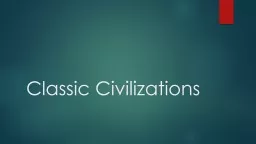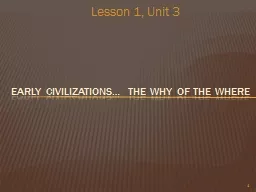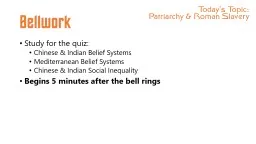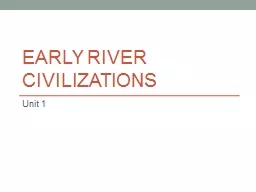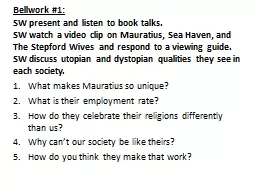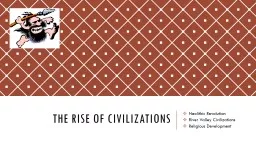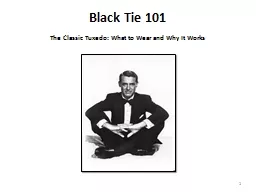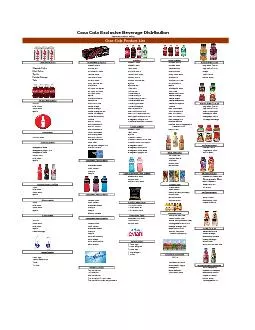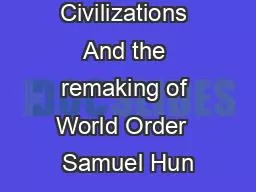PPT-Classic Civilizations Bellwork
Author : pamella-moone | Published Date : 2018-11-09
Step 1 Make a timeline like the one below P lace five major events that have happened in your life in chronological order Example for Mr Lembke Learned to Ski
Presentation Embed Code
Download Presentation
Download Presentation The PPT/PDF document "Classic Civilizations Bellwork" is the property of its rightful owner. Permission is granted to download and print the materials on this website for personal, non-commercial use only, and to display it on your personal computer provided you do not modify the materials and that you retain all copyright notices contained in the materials. By downloading content from our website, you accept the terms of this agreement.
Classic Civilizations Bellwork: Transcript
Download Rules Of Document
"Classic Civilizations Bellwork"The content belongs to its owner. You may download and print it for personal use, without modification, and keep all copyright notices. By downloading, you agree to these terms.
Related Documents

